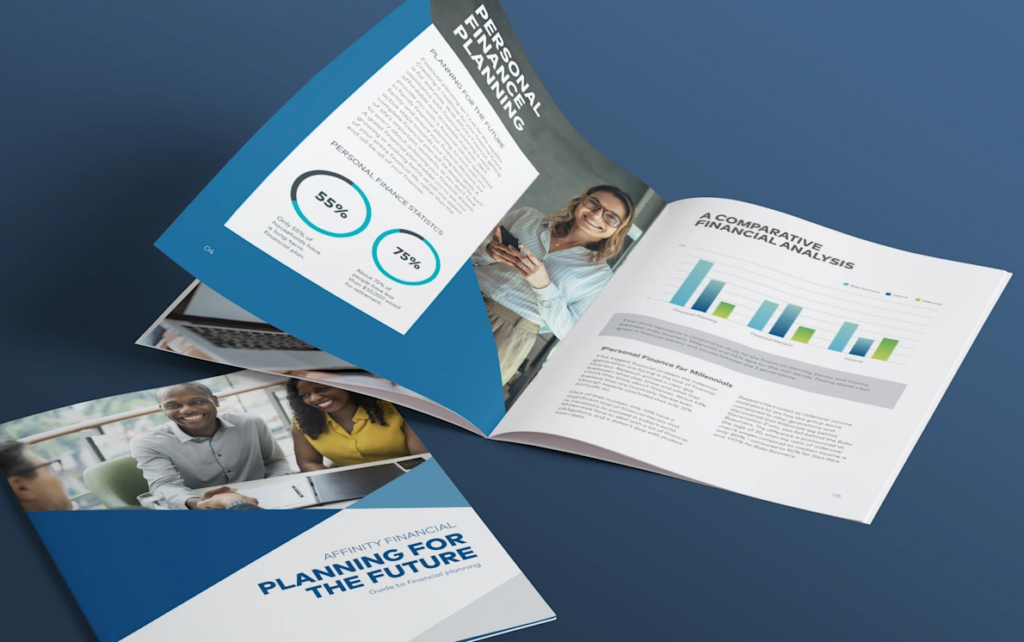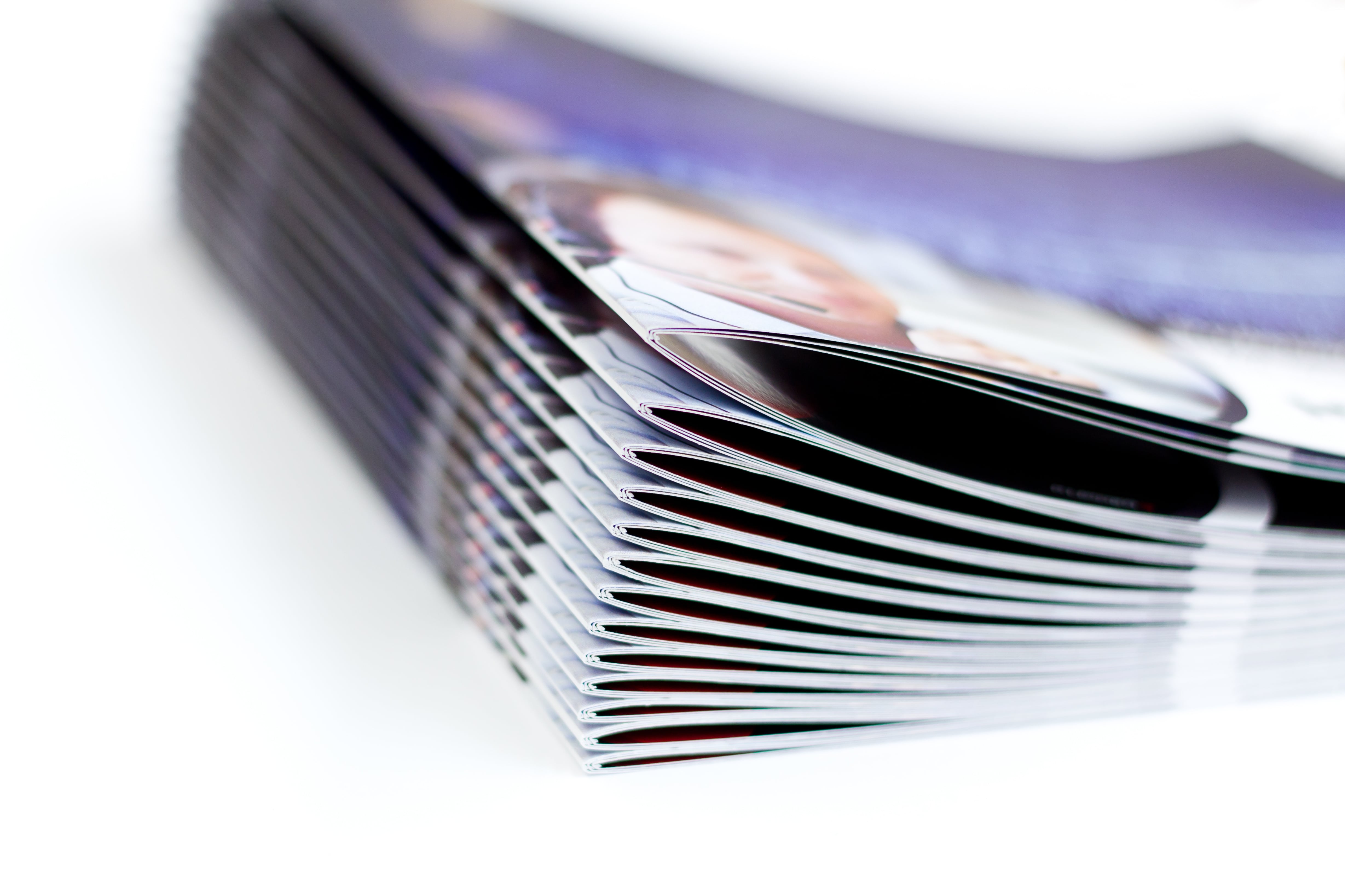The Crucial Overview to Comprehending Brochure Printing Options and Techniques
The procedure of pamphlet printing includes multiple factors to consider that can greatly influence the final item. From selecting the appropriate format and size to understanding the nuances of binding methods, each choice plays a necessary duty. Additionally, factors such as paper stock and printing strategies further influence the effectiveness of the pamphlet. As one navigates these options, it comes to be important to comprehend exactly how they adjoin and what that indicates for the general outcome.
Understanding Booklet Styles and Dimensions
When taking into consideration pamphlet printing, recognizing the numerous layouts and dimensions readily available is necessary for accomplishing the desired discussion. Booklets can be created in various styles, including saddle-stitched, spiral-bound, and perfect-bound, each offering distinctive benefits. Typical dimensions vary from common letter (8.5 x 11 inches) to smaller alternatives like A5 (5.8 x 8.3 inches), permitting versatility based on web content and target audience.Selecting the appropriate dimension can affect both the layout and reader involvement. Bigger sizes might suit aesthetically driven material, while smaller sized layouts might be a lot more portable and user-friendly. In addition, the number of web pages affects the option of binding technique, as thicker pamphlets might call for tougher bindings. Eventually, understanding these facets enables an extra customized technique, making certain that the last item lines up with the intended message and visual, improving the total efficiency of the communication.
Selecting the Right Paper Supply

Binding Techniques: Options and Factors To Consider
When it pertains to binding methods for brochures, a number of choices are offered, each with distinctive benefits. Saddle stitch binding provides an affordable option for thinner booklets, while ideal binding techniques give an even more sleek try to find thicker magazines. Wire-O binding stands apart for its sturdiness and convenience of use, making it ideal for papers that require versatility.
Saddle Stitch Binding
Saddle stitch binding supplies a practical and cost-effective service for setting up booklets, making it a prominent choice among organizations and authors. This binding method involves folding sheets of paper in fifty percent and stapling them along the fold line, creating a orderly and neat appearance. Generally ideal for pamphlets with a reduced web page matter, saddle stitching is excellent for publications, sales brochures, and instructional materials. The simplicity of this strategy enables quick manufacturing and is typically favored for brief runs or marketing products. It is important to note that saddle stitch binding may not be ideal for thicker brochures, as the spine may not hold up under boosted weight. On the whole, it stays a reliable choice for many printing tasks.
Perfect Binding Methods
Perfect binding is a widely utilized strategy that provides a professional and sleek finish to pamphlets and magazines. This technique includes gluing the web pages with each other at the back making use of a solid adhesive, enabling a clean side and the capacity to hold a bigger number of pages compared to saddle sewing. Perfect binding is especially suitable for thicker pamphlets, such as catalogs and yearly records, where a durable, flat back is preferred. Additionally, it provides the option for a published cover that can be made to improve aesthetic charm. However, factors to consider such as web page count, paper weight, and the meant use the booklet should be taken into consideration, as they can impact sturdiness and overall quality.
Wire-O Binding Choices
Wire-O binding, recognized for its sturdiness and adaptability, uses an exceptional choice for pamphlets that require simple page turning and a specialist look. This binding technique uses a collection of steel loopholes that hold web pages firmly, permitting them to exist flat when open. It is particularly suitable for magazines, discussions, and guidebooks due to its robust nature. Wire-O binding is available in different colors and sizes, fitting different web page matters and densities. In addition, it allows the addition of covers and tabs, improving the booklet's overall visual. Considerations for Wire-O binding include the choice of cable color, the dimension of the loopholes, and the level of personalization desired, every one of which can profoundly influence the end product's appearance and capability.
Digital vs. Offset Printing: Which Is Best for You?
When choosing a printing technique for booklets, recognizing the differences in between electronic and offset printing is crucial. Digital printing makes use of modern innovation to create top quality prints promptly and economically, making it perfect for brief runs or projects calling for quick turn-around times. It permits modification, offering the capacity to print on-demand with marginal waste.In contrast, balance out printing is a conventional approach that masters generating large amounts with regular high quality. It entails transferring ink from a plate to a rubber covering, after that to the paper, which results in vivid colors and exact information. Offset printing usually calls for longer setup times and is much more economical for bigger volumes.Ultimately, the choice between digital and balance out printing depends on task needs, budget, and desired quantity. For little, time-sensitive jobs, electronic might be the most effective choice, while offset may be more effective for bigger, high-grade productions.

Creating Your Pamphlet: Tips and Finest Practices
When creating a brochure, careful attention to format, typeface choice, and color usage can substantially boost its efficiency. A well-structured layout overviews the viewers's eye, while proper fonts guarantee readability and share the preferred tone. Furthermore, effective usage of shade can evoke feelings and emphasize key details, making the general design more impactful.
Picking the Right Layout
Just how can one successfully choose the appropriate design for a booklet? Initially, it is necessary to view publisher site assess the pamphlet's function and target audience. A tidy, organized layout enhances readability and engagement. Using a grid system can assist in straightening components continually, producing a specialist appearance. In addition, incorporating aesthetic hierarchy with differing sizes and positionings of pictures and text can assist the viewers's eye and emphasize crucial information. It is likewise essential to leave adequate white space, which prevents congestion and permits far better focus. Lastly, examining different designs via mock-ups can provide insight right into just how the design does in real-world circumstances, ensuring that the final item fulfills both aesthetic and functional needs.
Selecting Suitable Fonts
A well-chosen font style can considerably improve the total style of a pamphlet, enhancing the format and enhancing the web content's message. The choice of typefaces need to take into consideration readability, especially for body message, as it assures the details comes to all viewers. Sans-serif typefaces are usually favored for electronic layouts, while serif font styles can provide a conventional feel in published products. It's suggested to restrict font options to two or 3 to keep aesthetic coherence. Additionally, typeface dimension plays a crucial function; headings should be not overwhelming yet distinctive, while body text need to be comfy for analysis. When picking font styles, positioning with the pamphlet's motif and target audience is vital for reliable interaction and visual appeal.
Efficient Use Shade
Shade offers as a powerful tool in pamphlet layout, forming understandings and guiding reader feelings. It can stimulate feelings of excitement, peace, or depend on, relying on the colors chosen. Designers need to think about color theory principles, making certain that the chosen combination straightens with the pamphlet's message and target audience. Using warm colors like red and orange can produce seriousness, while cooler tones like blue and environment-friendly foster tranquility.Additionally, comparison plays a vital role; complementary colors can enhance readability and visual charm. Consistency in color usage across pages even more enhances brand identity and cohesion. Ultimately, effective color implementation not only captures attention yet additionally enhances the pamphlet's objective, making it an important aspect of successful design.
Ending Up Touches: Coatings and Unique Results
While lots of think about the material and layout of a booklet one of the most critical components, the ending up touches, such as finishes and unique impacts, play an important duty in boosting its general charm. Coatings can provide defense and longevity, making certain that the brochure endures deterioration. Matte surfaces use a sophisticated, non-reflective surface, while shiny finishings can make colors show up even more captivating and vibrant. Special results, like embossing or foil stamping, include a tactile measurement that can produce a remarkable impact. These techniques can highlight specific locations, drawing focus to essential information or producing visual interest. Additionally, UV covering can offer a high-shine finish that elevates the total look.Together, these ending up touches not just improve the booklet's aesthetic yet additionally communicate professionalism and interest to information, eventually leaving a long-term effect on the viewers.
Cost Factors To Consider for Booklet Printing
Comprehending the numerous cost factors to consider for pamphlet printing is vital for organizations and organizations aiming to enhance their spending plans. Key elements affecting prices include the choice of paper, ink, and binding techniques. Greater top quality products, such as premium paper or specialized inks, normally increase the overall expense. Furthermore, the dimension and web page matter of the pamphlet play a significant role; larger booklets need more resources and time to produce.Another crucial factor to consider is the printing strategy, whether electronic or countered, as each has its very own pricing framework and viability for various amounts. Organizations should also factor in design costs, which can differ based on intricacy and making use of professional services. Ultimately, delivery and handling costs can include to the total amount, specifically for huge orders. By reviewing these components, companies can make educated decisions that line up with their financial capabilities while achieving the wanted top quality in their published materials.
Often Asked Questions
What Are the Ecological Influences of Brochure Printing?
The environmental impacts of booklet printing consist of logging from paper production, carbon emissions from transportation, and waste generation from thrown out products - Booklet Printing. Sustainable practices, such as using recycled paper and environmentally friendly inks, can mitigate these results
Exactly How Can I Guarantee Color Precision in My Brochure?
To guarantee shade accuracy in a booklet, one need to use calibrated displays, utilize directory professional shade profiles, perform examination prints, and select high-quality printing solutions that provide shade matching and proofing choices for best outcomes.
What Is the Typical Turn-around Time for Booklet Printing?
The regular turnaround time for pamphlet printing varies depending on the intricacy and amount - Booklet Printing. Normally, it ranges from a couple of days to two weeks, influenced by factors such as publishing approaches and completing needs
Are There Minimum Order Quantities for Pamphlet Printing?

Can I Print Brochures in Several Languages?
Publishing pamphlets in numerous languages is feasible. Many printing services supply options for bilingual or multilingual formats, permitting efficient communication. Careful planning assurances that develop aspects fit different languages without jeopardizing readability or aesthetics. Additionally, elements such as paper stock and printing techniques further influence the effectiveness of the booklet. When considering booklet printing, recognizing the numerous layouts and dimensions offered is necessary for attaining the preferred presentation. When selecting a printing method for booklets, recognizing the differences in between electronic and balance out printing is vital. Furthermore, the size and page matter of the pamphlet play a considerable role; larger pamphlets need more resources and time to produce.Another vital factor to consider is the printing method, whether digital or countered, as each has its very own pricing framework and viability for different quantities. The ecological effects of booklet printing consist of logging from paper production, carbon exhausts from transportation, and waste generation from discarded products.